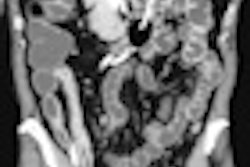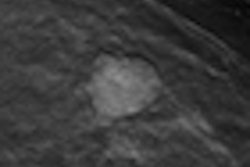The long-suspected existence of exposure creep -- in which radiation dose from computed radiography (CR) exams slowly rises over time -- has been documented in a long-term study of CR practices at an Australian teaching hospital. The study highlights the need for uniform exposure standards for CR systems manufactured by different vendors.
In a study published online January 9 in Academic Radiology, Robert Davidson, PhD, and doctoral candidate Dale Gibson demonstrated that radiologic technologists/radiographers at Flinders Medical Centre steadily increased exposure settings for CR procedures in the hospital's emergency room (ER) and intensive care and critical care units (ICU/CCU) during a 29-month period from August 2007 to December 2009.
Additional measurements covering February to August 2010, and again from November 2010 to March 2011, indicate that modifications to the hospital's CR quality assurance procedures halted the increases, but failed to actually reduce patient exposure.
Origins of dose creep
Medical imagers have known since David Gur, ScD, presented a seminal paper at the 1993 European Congress of Radiology that unique aspects of CR encourage technologists/radiographers to ratchet up exposure settings to increase image quality. Unlike with film-screen radiography, CR images are not degraded by overexposure.
"Higher exposure produces prettier pictures and avoids low quality," Davidson said in a telephone interview. "It doesn't produce more information to enable the radiologist to make a better diagnosis."
The Flinders Medical Centre study proved that exposure creep exists, Davidson said. Researchers examined 69,327 CR procedures from the hospital's ER and 17,678 CR studies in its ICU/CCU. All exams were performed on CR systems manufactured by Carestream Health.
Chest CR performed in the ICU/CCU revealed a consistent trend toward more overexposed studies and fewer exams involving underexposure or optimal settings. At the start of the study, about 25% of the CR procedures were overexposed. Sixteen months later, the percentage of overexposed CR studies had increased to 38% (p = 0.023).
No change was observed for CR exams performed in the ER. About 40% of the scans were overexposed on any given week throughout the study.
A quality assurance intervention designed to stanch the increases in the ICU/CCU was then implemented. It required technologists/radiographers to record the study's exposure index -- a measure of how many photons reach the CR plate based on mA, kVp, and patient body mass -- in addition to kVp and mAs settings that were already being recorded before the intervention.
ICU/CCU patients often undergo multiple CR examinations. By providing the technologists/radiographers with more information about the appropriateness of the first scan performed during a patient's stay, the intervention aimed to discourage them from raising the setting for subsequent procedures, Davidson said.
He credited the intervention for flattening the trend toward higher exposures, but it did not lead to lower exposures overall. A modest pattern indicating a higher percentage of exams were performed at optimal exposure was also seen.
Lack of uniform standards
The findings suggest that the quality assurance process is only one of several factors affecting manual-selection exposure settings, Davidson said. Technologists/radiographers have been using high settings to cope with the confusion caused by a lack of uniform standards among CR manufacturers for exposure terminology and system performance.
Carestream calls its measure of recommended exposure an exposure index (EI), while Fujifilm Medical Systems USA calls it an S value, and Agfa HealthCare refers to a log median (lgM) value.
But digital radiography (DR) users can expect to see more uniformity as more manufacturers adopt guidelines for standardized DR exposure indicators.
Two similar sets of standards have been published, according to S. Jeff Shepard, vice chair of the American Association of Physicists in Medicine (AAPM) practice guidelines subcommittee. The International Electrotechnical Commission (IEC) finalized a voluntary standard in 2008. The AAPM released recommendations in 2009.
When surveyed by Shepard early last year, six of eight DR manufacturers said they intended to conform to the IEC's exposure index standard by 2012.
Technologists/radiographers may also be compensating for an overly generous range of acceptable exposure settings as recommended by vendors, Davidson noted. Carestream, for example, determined that the acceptable EI range for appropriate image quality is 1,500 to 1,800. Based on discussions with the vendor, the Flinders medical staff expanded that interval to 1,400 to 1,800. In the study, underexposed images had an EI less than 1,400. Overexposed images had an EI greater than 1,800 and optimized images fell in the wide range in between.
Overall, the findings suggest to Davidson that the imaging community is still coming to grips with essential differences between traditional film-screen and digital x-ray technologies.
"There now needs to be a whole lot of research done in this area," he said. "We are just beginning to recognize that there are issues in terms of the way we approach the use of CR and DR."



















